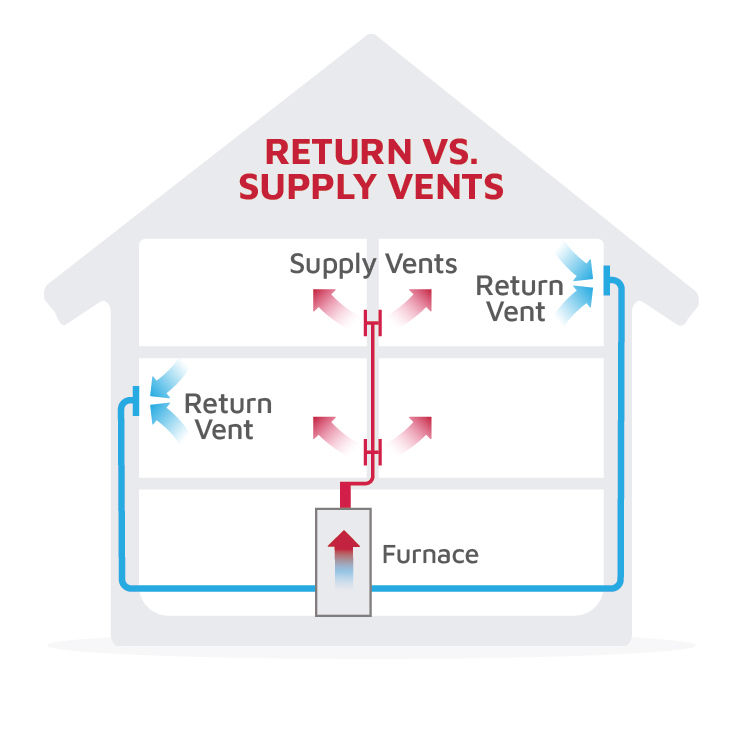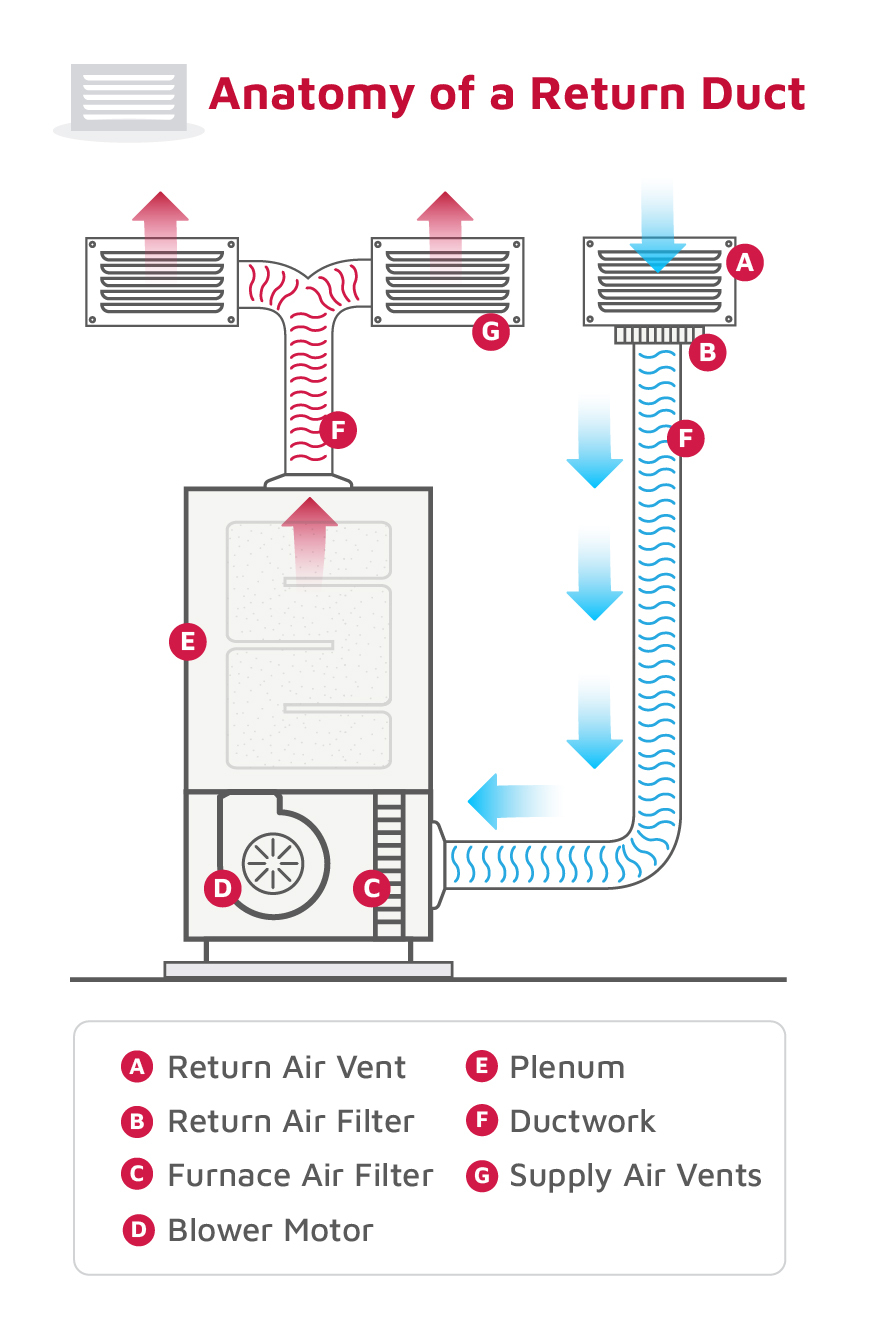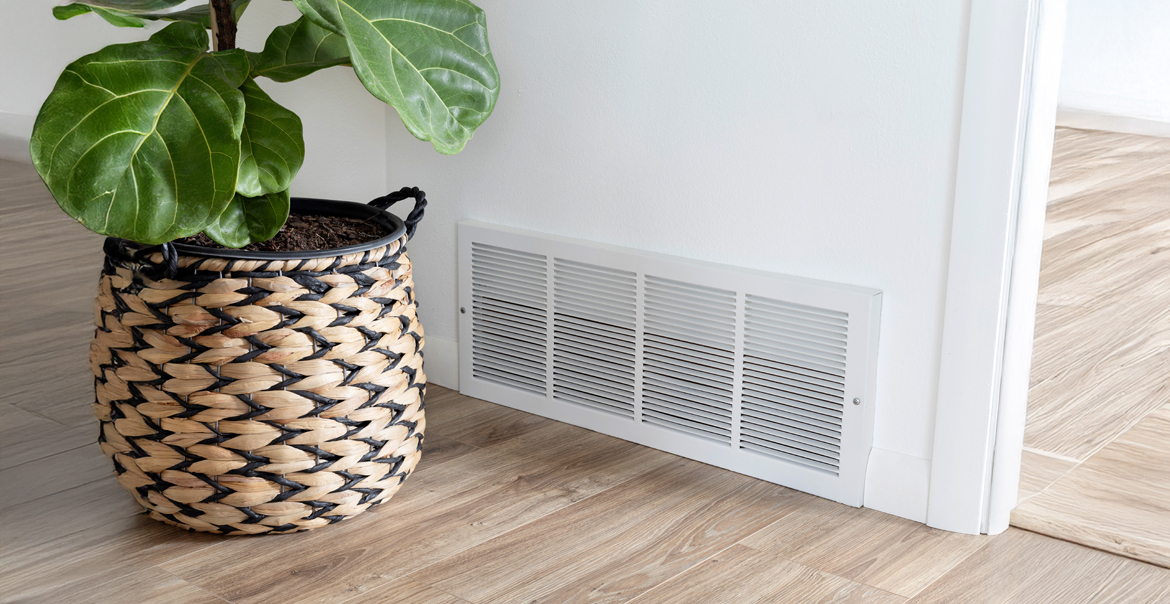When it comes to keeping your home comfortable year-round, most homeowners understand the roles of the thermostat, filters, furnace, and air conditioner. But there’s a lesser-known component quietly playing a vital role in maintaining comfort, air quality, and efficiency — the return air vent system.
Understanding how your HVAC return air vents work, where they’re located, and why they matter can help you improve performance, reduce energy costs, and maintain a healthier indoor environment.
What Are Return Air Vents?
Return air vents are openings that draw air from your living spaces back into the HVAC system. They are an essential part of the circulation loop that keeps your home’s air moving efficiently.
While supply vents push conditioned air into the rooms of your home, return vents pull that same air back to the heating or cooling unit. This continuous cycle allows your system to maintain balanced airflow and even temperatures throughout your home.

As return vents recirculate the air, they help your HVAC system:
- Maintain consistent indoor temperatures
- Filter and refresh indoor air
- Support proper air pressure balance between rooms
Without properly functioning return air vents, even the most advanced HVAC system can struggle to operate efficiently.
Common Locations for Return Air Vents
Return air vents are usually larger than supply vents and are found in central or open areas, such as hallways, living rooms, or near staircases. In some homes, every major room has its own smaller return vent, while others rely on one or two larger central returns.
Depending on your home’s design, vents may be installed:
- High on walls or ceilings in warmer climates, to draw in rising warm air
- Low on walls or floors in colder climates, to collect cool air near the ground
No matter the location, it’s important to keep vents unobstructed by furniture, curtains, or rugs to maintain proper airflow.
Why Return Air Vents Matter
Return air vents are essential for the overall performance and health of your HVAC system. When functioning correctly, they not only help regulate temperature and control indoor air quality, but they also prevent strain on your heating and cooling equipment.

1. They Maintain Balanced Airflow
Your HVAC system depends on equal parts supply and return airflow. When the return air system works properly, air moves evenly throughout your home, helping prevent hot and cold spots. If return airflow is restricted, pressure imbalances can develop. These imbalances can cause your system to work harder and can lead to drafts, uneven temperatures, and reduced comfort.
2. They Improve Energy Efficiency
An efficient airflow cycle allows your HVAC system to heat or cool more effectively without working harder than necessary. If return vents are blocked or too small, your equipment must compensate by running longer cycles, which increases energy use and utility costs. Properly sized and maintained return vents help lower your energy bills while reducing wear on components.
3. They Support Indoor Air Quality
As air passes through return vents, it travels through the system’s air filter before being conditioned again. This process captures dust, allergens, and pollutants, improving the air you breathe. When vents are clogged or dirty, debris can bypass the filter, reducing air quality and potentially spreading contaminants throughout your home.
4. They Reduce System Stress and Repairs
A restricted or undersized return air system forces your blower motor to work harder to pull air through. Over time, this added strain can lead to overheating, premature component wear, or costly repairs. Maintaining clean and open return vents helps protect your investment and extend the lifespan of your HVAC system.
Maintaining Your Return Air Vent System
Like any part of your HVAC system, return vents require regular attention to perform at their best. Simple maintenance steps can go a long way toward ensuring consistent comfort and efficiency.
- Clean and Inspect Regularly. Vacuum vent grilles and wipe them down with a damp cloth every few months to remove dust buildup. For deeper cleaning, remove the grille and use a soft brush to clean just inside the vent opening.
- Replace Filters on Schedule. Because return air passes through the system’s air filter, keeping filters clean is critical. Replace them every one to three months, depending on your home’s needs and manufacturer recommendations.
- Keep Vents Clear. Avoid placing furniture, drapes, or other objects in front of vents. Even partial blockages can restrict airflow and reduce system efficiency.
Watch for Warning Signs
If you notice excessive dust along the floorboards, rooms that feel stuffy, or temperatures that fluctuate between floors, it could be a sign of poor return airflow. Increased energy bills can also indicate the system isn’t circulating air effectively.
When in doubt, schedule a professional inspection. A qualified HVAC technician can measure airflow, check for water leaks, and ensure your return air system is properly sized and balanced.
Enhancing Return Air Performance
A well-functioning return air vent system is the foundation of a comfortable, efficient, and healthy home. By keeping vents clean, unobstructed, and properly maintained, you can help your HVAC system perform at its best, providing consistent comfort and clean air throughout the year.
For homeowners looking to take efficiency a step further, upgrading to high-efficiency filters or adding additional return vents in larger spaces can make a noticeable difference. A professional HVAC dealer can assess your home’s design, recommend the right filter option for ideal vent placement, and verify your system’s air balance for optimal performance.
If you’re experiencing any of the warning signs we discussed, your return air system could be the culprit — and it’s probably time to schedule an inspection. Contact your local HVAC professional and set up an airflow assessment to help ensure your home’s HVAC system continues to deliver the comfort you and your family need for years to come.

